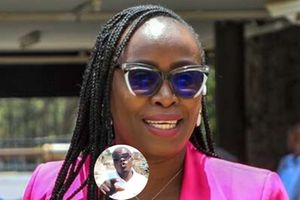It’s as easy as ABC to be safer on our roads

If we all know and follow the proper procedures, even these potentially dangerous criss-crossing situations can be undertaken in complete safety. PHOTO | FILE | NATION MEDIA GROUP
What you need to know:
And if we all know and follow the proper procedures, even these potentially dangerous criss-crossing situations can be undertaken in complete safety.
Where there are turn-offs, T-junctions, crossroads and so on, vehicles must be able to change speed and direction, which is intrinsically very dangerous.
Things are easier to remember if they make sense; if you can link them in a logical way to something you already know.
For safe driving, the link word to remember is “predictability”. Remember that. Just that.
It is the single most important factor in road safety — that you should be able to predict what every other road user is about to do, and every other road user can predict what you are about to do.
This principle is more important than all the laws and signs and markings and signals and systems put together. Because it IS all of those things put together.
When you go out onto the road — as a pedestrian, a cyclist, a passenger or a driver — you make a social contract with every other road user. You promise not to do anything rude or unexpected, and you receive that promise in turn from everybody else.
Common code
The master key to road safety is as simple and as absolute as that. The problem is how to know — predictably — what everybody else is about to do, and how to tell them what you intend to do.
Obviously, all must have a common code which everybody knows and follows. That code starts with an equally clear principle. On any given piece of road, everybody should drive in the same direction at about the same speed; a bit like a conveyor belt, which is intrinsically very safe. So keep left and keep going. Not such a lot to swot.
Where there are turn-offs, T-junctions, crossroads and so on, vehicles must be able to change speed and direction, which is intrinsically very dangerous.
So we have an agreed system of road signs and driver signals that tell us what to do, and what other road users are about to do, when a change of speed or direction is necessary.
And if we all know and follow the proper procedures, even these potentially dangerous criss-crossing situations can be undertaken in complete safety.
Back to basics
If everybody appreciated these “obvious” principles, knowing the rules of the road would be natural and conforming to them would be automatic. It would take a hundred pages just to list all the different accident causes and situations.
But by going back to basics we can summarise the whole lot in a single sentence: “When a road user changes his speed or direction, unexpectedly.”
The coded dogma that summarises this is: Mirror. Signal. Move.
That means look before you signal. It means signal before you move. And it means move (change speed and/or direction) only after seeing that it is safe to do so and only after signalling other motorists that you intend to do so.
Come, now, is that such a lot to remember? After all, insects can fly around in swarms of millions without bumping into each other. And their brains are smaller than a grain of sand.





